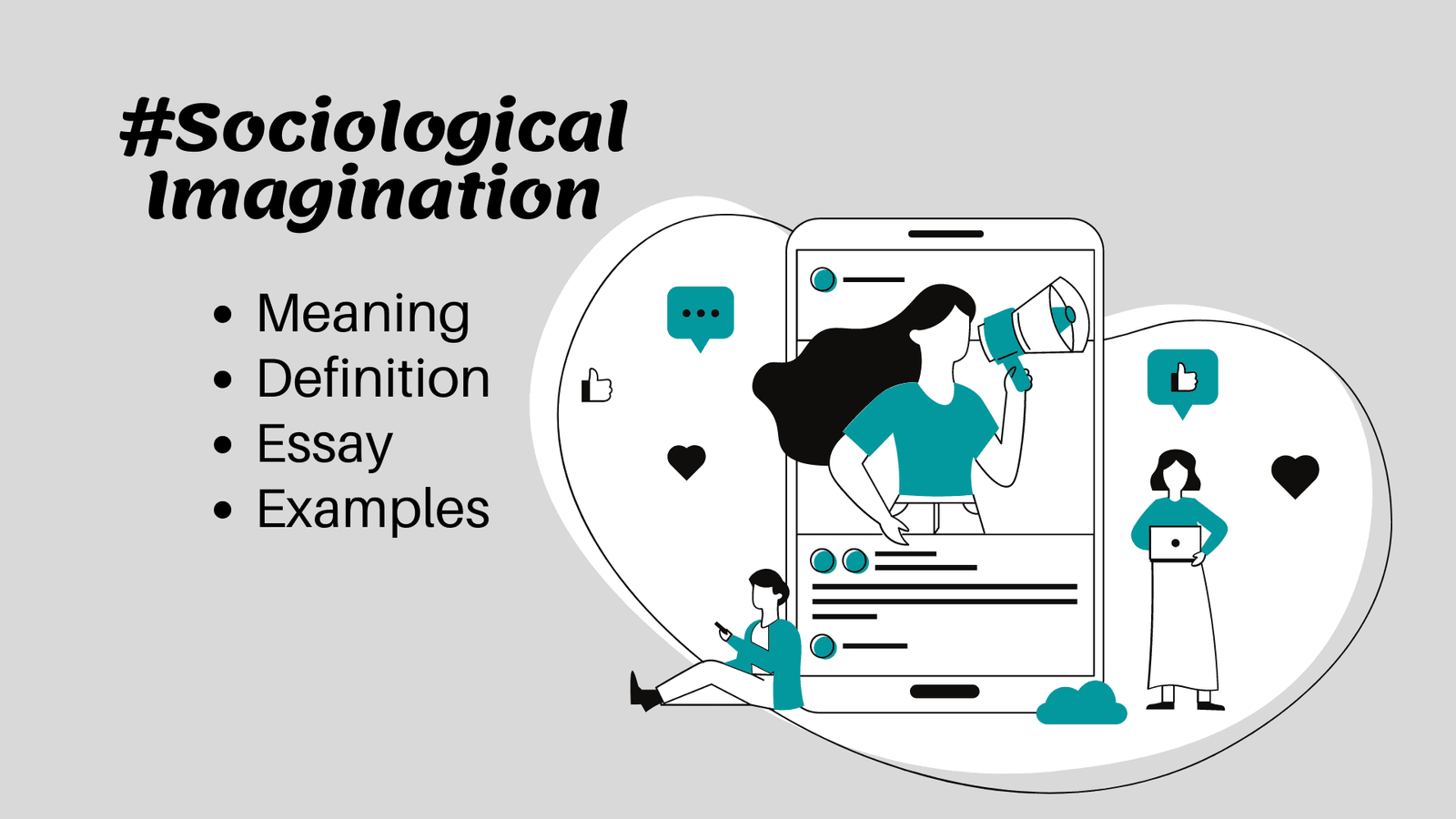Have you ever felt like your individual life is constantly bumping up against societal forces that feel bigger than you? Like your personal struggles are somehow connected to larger patterns of inequality and injustice? That’s the feeling that C. Wright Mills, a prominent sociologist, tried to capture in his term “sociological imagination.”

Image: www.audible.ca
The sociological imagination is more than just a fancy phrase; it’s a way of thinking that helps us understand the relationship between our personal experiences and the broader social forces that shape them. It’s about seeing beyond the immediate, individual circumstances and recognizing the influence of history, culture, and social structures on our lives. In essence, it’s about connecting the dots between the personal and the social.
Understanding the Power of the Sociological Imagination
Imagine you’re struggling to find a job. It’s easy to blame yourself for lacking the right skills, but the sociological imagination encourages us to look beyond ourselves. Perhaps unemployment rates are high in your area or certain industries are shrinking. Maybe there are discriminatory practices at play that are preventing certain groups from finding work. The sociological imagination helps us see how broader social forces can contribute to personal challenges.
A Historical Framework
The concept of the sociological imagination emerged in the mid-20th century, a time marked by significant social upheaval and change. The aftermath of World War II, the rise of consumerism, and the burgeoning civil rights movement all contributed to a growing awareness of the interconnectedness of personal lives and social structures. Mills argued that understanding these forces was crucial for individuals to make sense of their experiences and find meaningful solutions to social problems.
The Foundational Concepts:
The sociological imagination is based on several key concepts:
1. The Social Construction of Reality: This concept recognizes that our understanding of the world is not inherent or natural but is shaped by our social interactions, cultural values, and historical context.
2. The Intersectionality of Social Categories: We are not just individuals but hold multiple social identities – race, gender, class, sexuality, etc. – that interact and influence our experiences.
3. Social Structures and Agency: Our lives are shaped by social structures like the economy, education system, and political institutions, but we also have agency – the ability to make choices and shape our own lives within those structures.

Image: www.ilearnlot.com
Beyond Personal Troubles:
The sociological imagination helps us move beyond viewing problems as purely personal issues. Let’s consider the example of homelessness. A purely individualistic perspective might point to personal flaws or poor choices as the cause. However, the sociological imagination compels us to examine the systemic factors contributing to homelessness, such as economic inequality, lack of affordable housing, and mental health issues often exacerbated by poverty.
Applying the Sociological Imagination in Your Everyday Life
The sociological imagination is not simply a theoretical framework; it’s a powerful tool for navigating our world and making positive change. Here are a few ways you can use it in your daily life:
-
Challenging Societal Norms: Questioning why things are the way they are. For example, consider gender roles in your life. Are they truly natural or have they been socially constructed?
-
Empathy and Understanding: Imagine yourself in the shoes of others. How do their social identities, life experiences, and circumstances shape their perspectives?
-
Critical Consumption of Media: Be aware of the social narratives presented in news, movies, and social media. How do they influence your understanding of the world?
-
Engaging in Social Activism: Use your knowledge and understanding of social issues to contribute to positive change through activism, volunteering, or advocacy.
Expert Insights and Actionable Tips:
“The sociological imagination is not just about understanding the world; it’s about taking action to change it,” says Dr. Sarah Jones, a leading sociologist. She suggests journaling about your experiences and how they relate to larger societal issues. This can help you identify patterns and develop a deeper understanding of your connection to the world.
What Is Sociology Imagination
Moving Beyond the Individual:
By developing our sociological imagination, we can move beyond limiting individual perspectives and begin to see the world in a new light. We can recognize the interconnectedness of our lives with the lives of others and the influence of social forces on our choices, opportunities, and challenges. This understanding empowers us to engage with the world in a more informed, empathetic, and ultimately more meaningful way.
It’s time to broaden your perspective, challenge your assumptions, and see the world through the lens of the sociological imagination – a perspective that helps you connect the dots between personal experiences and the social forces that shape them.





